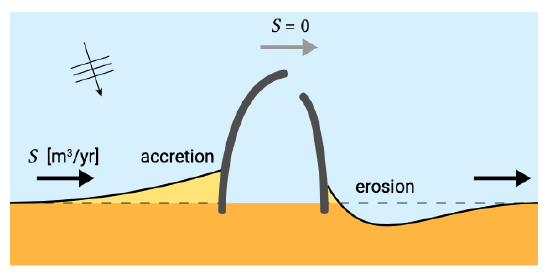10.2.2: Selection of protection method
- Page ID
- 16425
\( \newcommand{\vecs}[1]{\overset { \scriptstyle \rightharpoonup} {\mathbf{#1}} } \)
\( \newcommand{\vecd}[1]{\overset{-\!-\!\rightharpoonup}{\vphantom{a}\smash {#1}}} \)
\( \newcommand{\id}{\mathrm{id}}\) \( \newcommand{\Span}{\mathrm{span}}\)
( \newcommand{\kernel}{\mathrm{null}\,}\) \( \newcommand{\range}{\mathrm{range}\,}\)
\( \newcommand{\RealPart}{\mathrm{Re}}\) \( \newcommand{\ImaginaryPart}{\mathrm{Im}}\)
\( \newcommand{\Argument}{\mathrm{Arg}}\) \( \newcommand{\norm}[1]{\| #1 \|}\)
\( \newcommand{\inner}[2]{\langle #1, #2 \rangle}\)
\( \newcommand{\Span}{\mathrm{span}}\)
\( \newcommand{\id}{\mathrm{id}}\)
\( \newcommand{\Span}{\mathrm{span}}\)
\( \newcommand{\kernel}{\mathrm{null}\,}\)
\( \newcommand{\range}{\mathrm{range}\,}\)
\( \newcommand{\RealPart}{\mathrm{Re}}\)
\( \newcommand{\ImaginaryPart}{\mathrm{Im}}\)
\( \newcommand{\Argument}{\mathrm{Arg}}\)
\( \newcommand{\norm}[1]{\| #1 \|}\)
\( \newcommand{\inner}[2]{\langle #1, #2 \rangle}\)
\( \newcommand{\Span}{\mathrm{span}}\) \( \newcommand{\AA}{\unicode[.8,0]{x212B}}\)
\( \newcommand{\vectorA}[1]{\vec{#1}} % arrow\)
\( \newcommand{\vectorAt}[1]{\vec{\text{#1}}} % arrow\)
\( \newcommand{\vectorB}[1]{\overset { \scriptstyle \rightharpoonup} {\mathbf{#1}} } \)
\( \newcommand{\vectorC}[1]{\textbf{#1}} \)
\( \newcommand{\vectorD}[1]{\overrightarrow{#1}} \)
\( \newcommand{\vectorDt}[1]{\overrightarrow{\text{#1}}} \)
\( \newcommand{\vectE}[1]{\overset{-\!-\!\rightharpoonup}{\vphantom{a}\smash{\mathbf {#1}}}} \)
\( \newcommand{\vecs}[1]{\overset { \scriptstyle \rightharpoonup} {\mathbf{#1}} } \)
\( \newcommand{\vecd}[1]{\overset{-\!-\!\rightharpoonup}{\vphantom{a}\smash {#1}}} \)
\(\newcommand{\avec}{\mathbf a}\) \(\newcommand{\bvec}{\mathbf b}\) \(\newcommand{\cvec}{\mathbf c}\) \(\newcommand{\dvec}{\mathbf d}\) \(\newcommand{\dtil}{\widetilde{\mathbf d}}\) \(\newcommand{\evec}{\mathbf e}\) \(\newcommand{\fvec}{\mathbf f}\) \(\newcommand{\nvec}{\mathbf n}\) \(\newcommand{\pvec}{\mathbf p}\) \(\newcommand{\qvec}{\mathbf q}\) \(\newcommand{\svec}{\mathbf s}\) \(\newcommand{\tvec}{\mathbf t}\) \(\newcommand{\uvec}{\mathbf u}\) \(\newcommand{\vvec}{\mathbf v}\) \(\newcommand{\wvec}{\mathbf w}\) \(\newcommand{\xvec}{\mathbf x}\) \(\newcommand{\yvec}{\mathbf y}\) \(\newcommand{\zvec}{\mathbf z}\) \(\newcommand{\rvec}{\mathbf r}\) \(\newcommand{\mvec}{\mathbf m}\) \(\newcommand{\zerovec}{\mathbf 0}\) \(\newcommand{\onevec}{\mathbf 1}\) \(\newcommand{\real}{\mathbb R}\) \(\newcommand{\twovec}[2]{\left[\begin{array}{r}#1 \\ #2 \end{array}\right]}\) \(\newcommand{\ctwovec}[2]{\left[\begin{array}{c}#1 \\ #2 \end{array}\right]}\) \(\newcommand{\threevec}[3]{\left[\begin{array}{r}#1 \\ #2 \\ #3 \end{array}\right]}\) \(\newcommand{\cthreevec}[3]{\left[\begin{array}{c}#1 \\ #2 \\ #3 \end{array}\right]}\) \(\newcommand{\fourvec}[4]{\left[\begin{array}{r}#1 \\ #2 \\ #3 \\ #4 \end{array}\right]}\) \(\newcommand{\cfourvec}[4]{\left[\begin{array}{c}#1 \\ #2 \\ #3 \\ #4 \end{array}\right]}\) \(\newcommand{\fivevec}[5]{\left[\begin{array}{r}#1 \\ #2 \\ #3 \\ #4 \\ #5 \\ \end{array}\right]}\) \(\newcommand{\cfivevec}[5]{\left[\begin{array}{c}#1 \\ #2 \\ #3 \\ #4 \\ #5 \\ \end{array}\right]}\) \(\newcommand{\mattwo}[4]{\left[\begin{array}{rr}#1 \amp #2 \\ #3 \amp #4 \\ \end{array}\right]}\) \(\newcommand{\laspan}[1]{\text{Span}\{#1\}}\) \(\newcommand{\bcal}{\cal B}\) \(\newcommand{\ccal}{\cal C}\) \(\newcommand{\scal}{\cal S}\) \(\newcommand{\wcal}{\cal W}\) \(\newcommand{\ecal}{\cal E}\) \(\newcommand{\coords}[2]{\left\{#1\right\}_{#2}}\) \(\newcommand{\gray}[1]{\color{gray}{#1}}\) \(\newcommand{\lgray}[1]{\color{lightgray}{#1}}\) \(\newcommand{\rank}{\operatorname{rank}}\) \(\newcommand{\row}{\text{Row}}\) \(\newcommand{\col}{\text{Col}}\) \(\renewcommand{\row}{\text{Row}}\) \(\newcommand{\nul}{\text{Nul}}\) \(\newcommand{\var}{\text{Var}}\) \(\newcommand{\corr}{\text{corr}}\) \(\newcommand{\len}[1]{\left|#1\right|}\) \(\newcommand{\bbar}{\overline{\bvec}}\) \(\newcommand{\bhat}{\widehat{\bvec}}\) \(\newcommand{\bperp}{\bvec^\perp}\) \(\newcommand{\xhat}{\widehat{\xvec}}\) \(\newcommand{\vhat}{\widehat{\vvec}}\) \(\newcommand{\uhat}{\widehat{\uvec}}\) \(\newcommand{\what}{\widehat{\wvec}}\) \(\newcommand{\Sighat}{\widehat{\Sigma}}\) \(\newcommand{\lt}{<}\) \(\newcommand{\gt}{>}\) \(\newcommand{\amp}{&}\) \(\definecolor{fillinmathshade}{gray}{0.9}\)In general, there are two possible solutions to coastal morphological problems, viz. ‘hard’ measures (coastal structures) and ‘soft’ (natural) measures.
‘Soft’ methods
The principle of ‘soft’ measures like beach or foreshore nourishment is to compensate for the eroded sand by nourishing sand, without great interference in the sediment transport patterns. This implies that the ‘natural’ erosion processes are allowed to continue. The eroded material is replaced on a regular basis with sand from somewhere else. This sand could be supplied, for instance, from deep water borrow areas, or from the sediment deposited in an approach channel or upstream of a port. So the ‘soft’ solution to the erosion problem is in fact pumping sand towards the erosion area. Another example of a ‘soft’ solution is managed retreat in combination with protecting the retreated shoreline with a restored marsh.

Bypass systems form a special category of ‘soft’ solutions that artificially restore a (human-induced) blockage of the sediment transport. An example is a sand bypass system that brings sand from the accreting updrift shoreline to the eroding downdrift shoreline (see Fig. 10.2). In this way, the interruption of the sediment transport by the harbour is taken away.
Another example is a system in a river, which bypasses sediment from the upstream side of a hydropower dam to downstream in order not to interrupt the sediment supply to a river delta. The bypass system at the dam may take the form of a small cutter dredge that is continuously cleaning the basins upstream of the dam. The spoil is transported by a pipeline downstream of the dam into the river. Without such a system, the river deltas may retreat after the construction of the dam.
‘Hard’ methods
Examples of ‘hard’ measures are series of groynes, series of offshore breakwaters, sub- merged breakwaters and revetments or seawalls (see Sect. 10.5.1 and Sect. 10.6). They avoid that sediment is eroded by interfering in the sediment transports in alongshore and cross-shore directions of the coasts. This can be achieved in many ways depending on the problem. For instance, undesired sedimentation can be prevented by structures that guide the currents in such a way that velocities and thus sediment transport rates increase. The ‘hard’ measures that counteract erosion can broadly be subdivided in:
- Structures that primarily influence the rate of longshore transport under both normal and extreme conditions (groynes, a (long) dam to divert the wave and tide driven currents, detached breakwaters1);
- Structures that prevent erosion during extreme storm events (sea wall, revetment, sea dike).
The choice for a ‘hard’ or a ‘soft’ measure depends both on the characteristics of the problem concerned and on economic considerations. In Coastal Zone Management practice, the use of beach nourishment is becoming increasingly popular. Many of the frequently occurring adverse side effects of ‘hard’ measures can be avoided by using beach nourishments. It is noted though that beach nourishment in coastal zones that have a rich nearshore ecological value (e.g. sea grass meadows) is often problematic because of environmental reasons.
Nonetheless, the possible use of ‘hard’ measures for coastal protection still cannot be disregarded. A coastal engineer should at least have proper insight into the physical processes related to ‘hard’ measures. The desired effects (often: reduction or mitigation of the erosion potential in a given stretch of coast), and the often detrimental effects on adjacent coasts (lee-side erosion), have to be considered with care. Only then an appropriate choice can be made between the many coastal protection methods.
1. Emerged detached breakwaters may also reduce storm-induced beach and dune erosion to a certain extent, see Sect. 10.5.4


